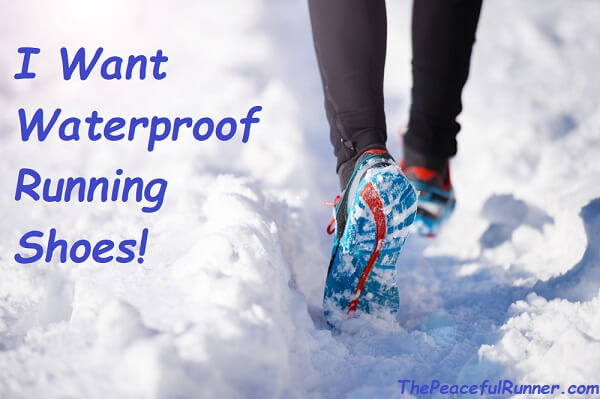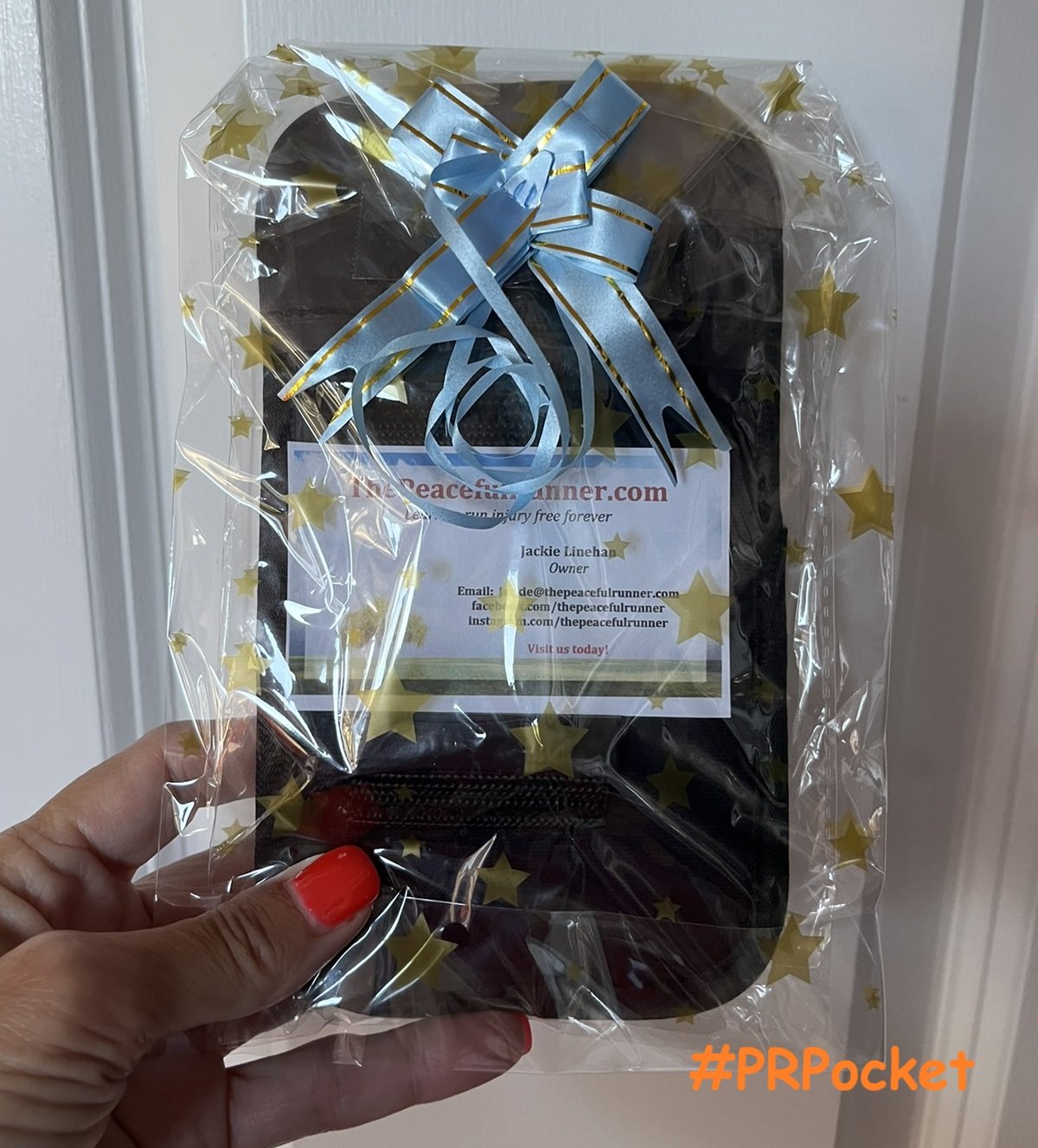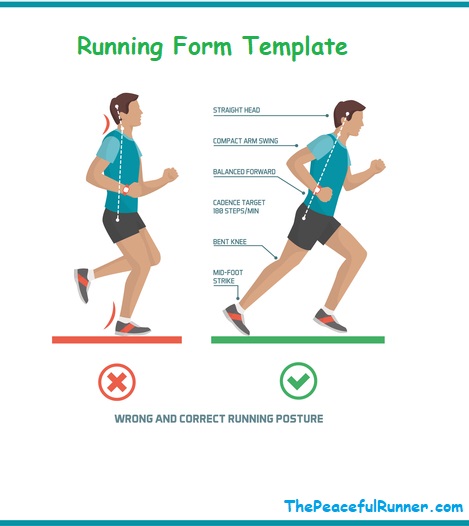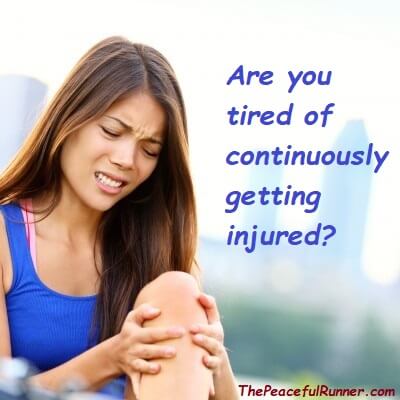- Home
- Running Injuries
- Plantar Fasciitis
Recover from Plantar Fasciitis Quickly!
FTC Disclosure: As an Amazon Associate, I earn from qualifying purchases. Learn more
Plantar fasciitis is a painful condition of the foot, in which the plantar fascia has become stretched or inflamed. It is one of the more common and bothersome of running injuries as the pain can last for months before the fascia finally heals. But don't despair! The more you know about this condition and the factors that contribute to it, the better equipped you will be to prevent it and to speed healing if you are currently suffering because of this stubborn condition.
Ten percent of all people will suffer from plantar fasciitis at some point during their lives (Wikipedia). If you are a runner, you are 10 percent more likely to develop this dreadful condition! However, you have a much better chance of avoiding it when you know what it is and its causes.
The plantar fascia is a thick, band of connective tissue that runs from the front of the heel to the ball of the foot. The plantar tendon keeps the arch of the foot from flattening completely when weight is placed on the foot. It is a natural shock absorption mechanism. However, if the plantar fascia stretches too much, tears can develop resulting in painful scar tissue as it tries to heal.
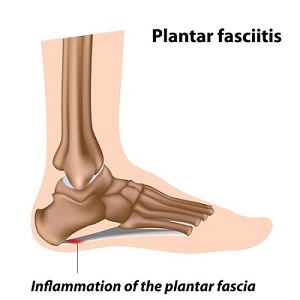
What are the symptoms?
If you have plantar fasciitis, you are probably experiencing a number of the following:
- Pain in your foot near the bottom of the heel or along the arch
- Pain is often worse when first standing in the morning or after sitting for long periods of time
- Pain may be worse when you first start to run and lessen as the tissue relaxes
- Pain may return after running or walking for extended periods of time
- Your arch may have dropped or become flat
Causes of plantar fasciitis
Too much stress on the plantar fascia causes it to overstretch and tear. Micro-tears are formed and the fascia begins to pull away from the bone causing inflammation. If the tendon is continuously over-stretched, calcium develops near the heel bone. Over time the calcium will develop into a heel spur creating more pain and discomfort in the heel.
Research at the University of Delaware concluded that there's a connection between high impact loading rates and plantar fasciitis. Other studies have shown a connection with dorsiflecting the foot (landing on the heel with the foot angled upwards). These findings are a strong indication that heel striking is a major factor in the development of an inflamed plantar tendon. If you land on your heel while running and have pain in your heel area, changing to a forefoot or mid-foot strike could greatly improve the health of your feet.
Other factors that may be contributing to this condition are:
- Over-striding, which encourages heel striking
- Slow cadence (turnover rate) while running
- Weak or tight muscles in the foot
- Tight calf muscles
- An inflexible Achilles Tendon
- Transitioning too quickly to minimalist shoes
- Walking barefoot in the sand too much, too quickly
Treatments and Prevention
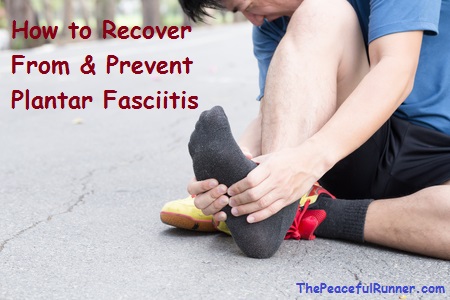
If you suspect you have plantar fasciitis, you should stop running or reduce the amount of training depending on the severity of your condition. Common sense rules!
Check your running posture to ensure that you are not over-striding. Your foot needs to land directly below your center of gravity using a forefoot or mid-foot strike. These healthier foot strikes helps to stretch and strengthen the ankles and calf muscles.
Try to increase your cadence to 180 steps per minute (90 for each foot). Cadence is the number of times your feet hit the ground each minute while running. Having a quick cadence helps to ensure that you are not over-striding and that your feet are not on the ground any longer than necessary.
Make sure that your lower legs are relaxed. Any tension in your calves or lower muscles will pull on your plantar tendon and cause more irritation.
Using recovery products will help to support your foot while it is healing—allowing for a faster recovery with less pain.
There have been a number of studies in which results showed an improvement in approximately 80 percent of plantar fasciitis patients after wearing night splints. Studies also showed that they were especially useful in individuals who had symptoms for more than 12 months.
Try self-massaging the plantar fascia to help it relax. You can try taping the arch with plantar fasciitis tape or wearing compression socks to help reduce the pain.
You could also try wearing sandals with built-in orthotic to reduce stress on heels and to support arches, which can help with pain relief and recovery,
Also, another treatment you may want to consider is acupuncture. A number of long term sufferers of plantar fasciitis have had positive results with acupuncture treatments according to this article: Is Acupuncture An Effective Treatment For Plantar Fasciitis?
Exercises for plantar fasciitis
Stretching your calves and feet will really help. Try the following exercises:
- Use a golf ball to stimulate and stretch your arch. Place the golf ball on the floor and roll your foot back and forth over the ball. You will feel the plantar fascia stretching.
- Try picking up objects with your toes: socks, marbles, etc.
- Do toe pulls - grab a towel with your toes and pull it towards you
- Foot stretch - sit with right foot on your left knee. Grab your toes and front part of your foot with the palm of your right hand. Pull the foot toward you in a manner in which you can feel the foot stretching. Repeat with the left foot.
- Achilles tendon and calf muscle stretch - keep one foot flat on a stair step. Place the arch of your other foot on the edge of a step. Then let your heel drop slowly to get a good stretch. Alternate feet positions to give both your calves a good stretch. This stretch can also be performed on a street curb.
- Orthotics may be used as a short term solution to help with the pain but a long term solution involving correcting the initial cause of the problem would be more beneficial.
In more extreme cases, a physician may recommend a cortisone injection to quickly reduce the inflammation. However, this should only be used in severe cases as there are possible side affects when using injections in the heel area.
Take a holistic approach and include meditating on your injury to quickly restore and balance the body's energy, decrease pain levels and speed healing or listen to a guided running injury healing meditation to recover faster!
Prevention is the cure!
As with all injuries, it is best to try to prevent them before they occur. Correct any deficiencies in your running posture and ensure your body's movements are relaxed and flowing without any constrictions and strengthen your feet.
When you are not feeling pain in your foot, work on developing strength in your feet. Walk barefoot (with or without socks) as much as possible to help stretch and strengthen the plantar tendon. Do foot strengthening exercises as mentioned above.
At some point you may want to consider transitioning to minimalist or barefoot running shoes. This style of running encourages a mid-foot strike and the flexible shoes allow the feet to stretch out and strengthen. A word of caution though: switching to minimalist shoes should be done gradually and properly. Read more about transitioning to Barefoot Running to ensure you approach it safely and sensibly.
Other related articles:
Back to top of Plantar Fasciitis
Return to Are You Prone to Running Injuries?
- Home
- Running Injuries
- Plantar Fasciitis
FTC Disclosure: As an Amazon Associate, I earn from qualifying purchases. Learn more

NEW FEATURE - DISQUS COMMENTS!
Login using Facebook, Twitter, Google or Disqus.
Recent Articles
-
How to Choose the Best Treadmill for Your Home
Dec 10, 25 07:13 AM
-
Winter Running Tips and the Best Waterproof Running Shoes
Nov 15, 25 01:55 PM
-
When the Music Stops, Awareness Begins
Nov 05, 25 10:54 AM
-
Get yours in time for gift giving!
Oct 24, 25 12:32 PM
-
Change How You Deal with Running Pain
Oct 10, 25 08:53 AM
-
Surprising Benefits of Backwards Running
Sep 15, 25 12:40 PM
-
It's an Awesome Product!
Aug 28, 25 09:25 AM
I went out for a walk this morning and I used the #PRPocket for the first time. I had to check at least 3 times because I thought I lost my phone (iPhone -
Running in Hot Weather: What Every Runner Needs to Know!
Aug 14, 25 01:00 PM
-
Sick of Dieting? You’re Not Alone — And There Is a Better Way.
Jul 30, 25 12:18 PM
-
Tips and Drills to Improve Your Running Cadence
Jul 25, 25 12:52 PM














